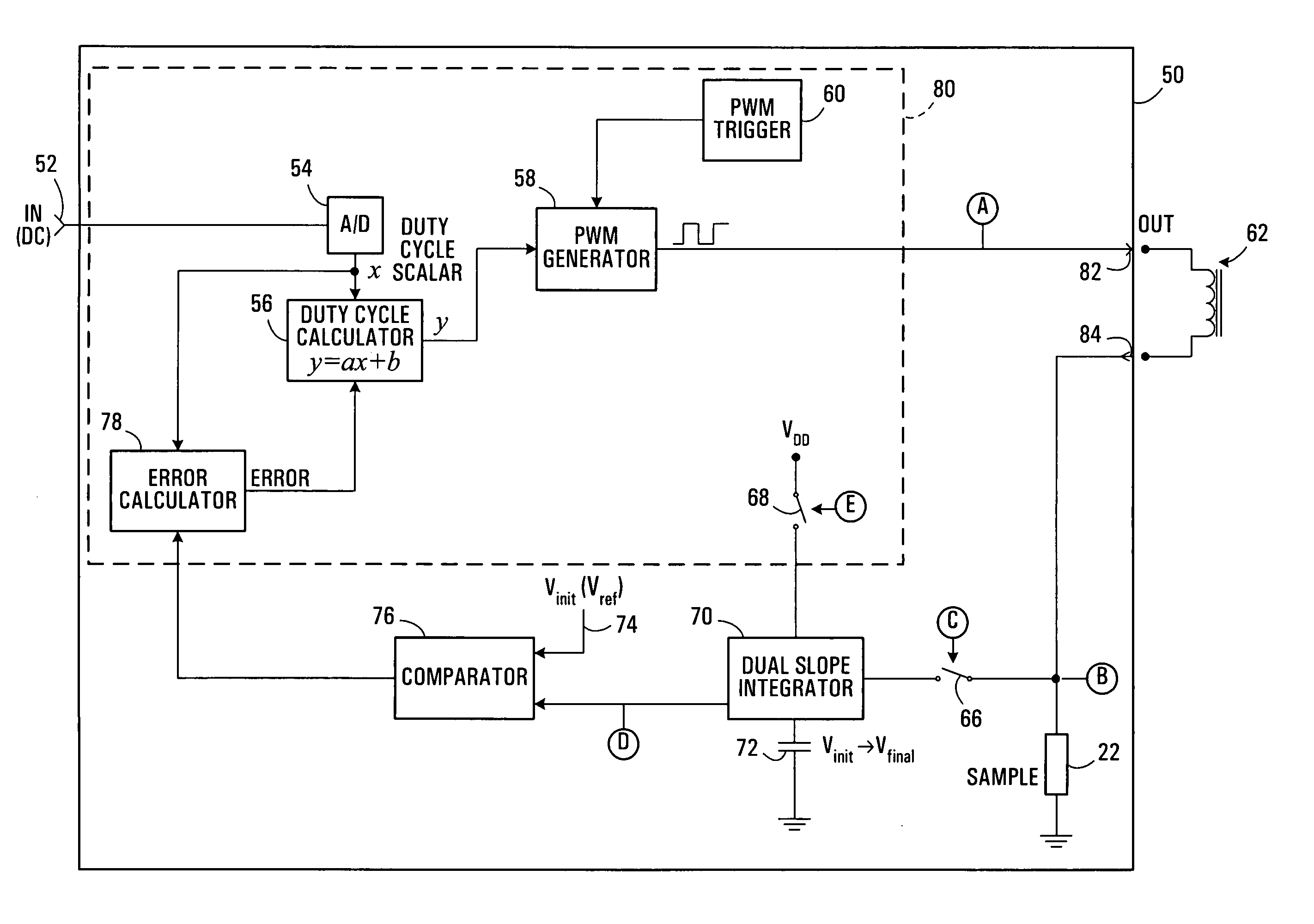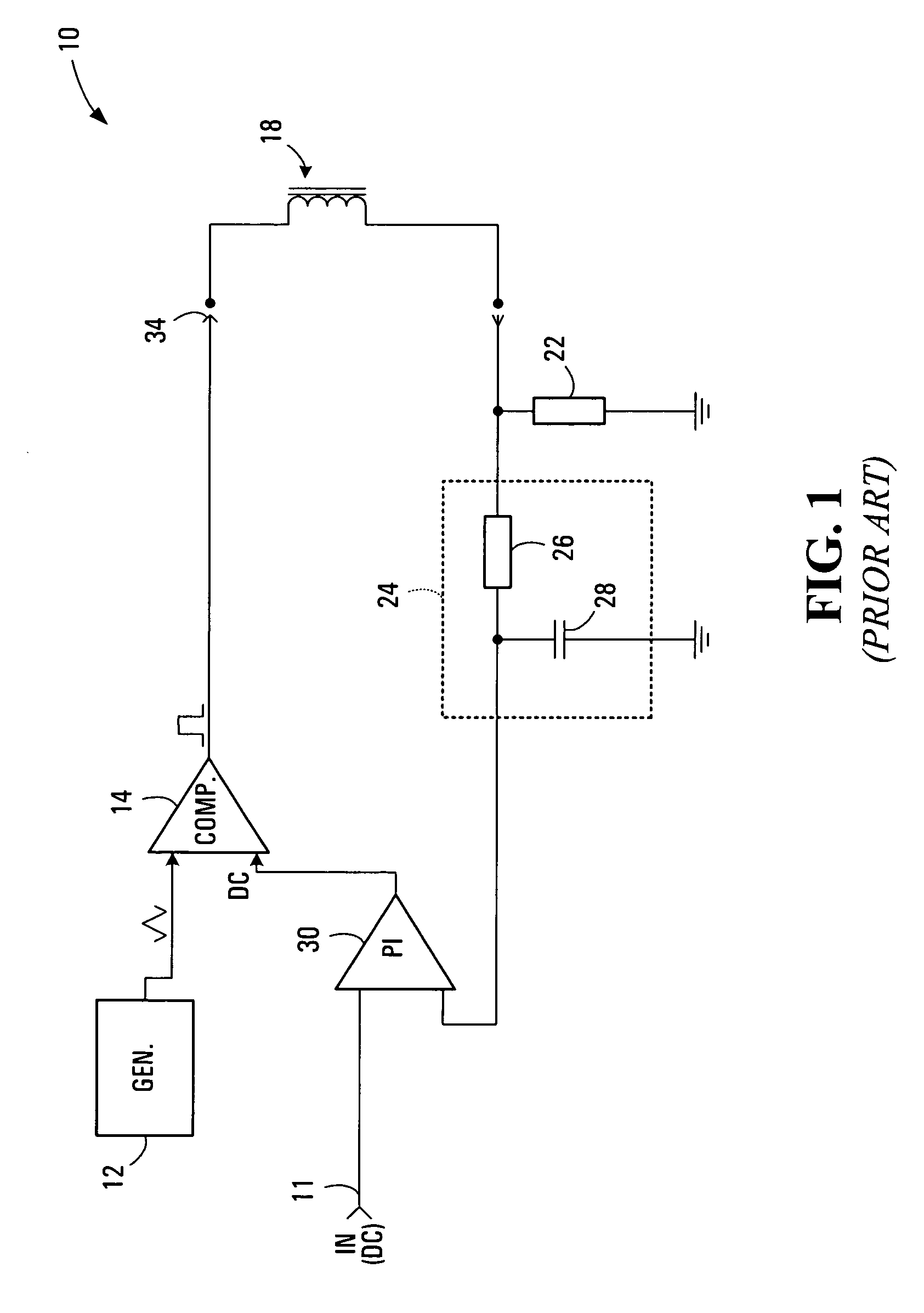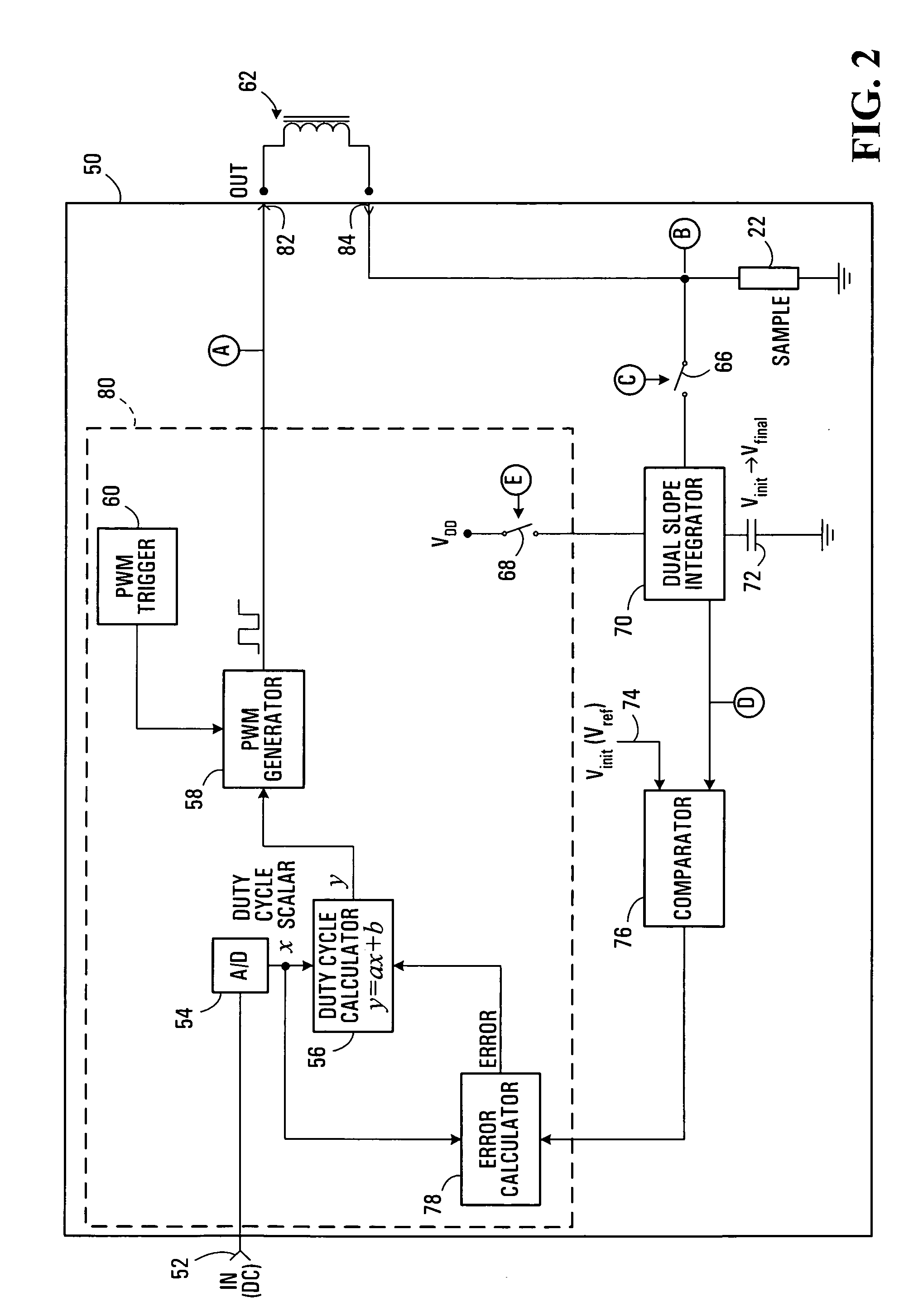Current driver employing pulse-width modulation
a pulse-width modulation and current driver technology, applied in the direction of electric pulse generator, position/direction control, electric variable regulation, etc., can solve the problem of introducing error or delay into the output pwm signal, using such a low-pass filter, and measuring average current which fluctuates over tim
- Summary
- Abstract
- Description
- Claims
- Application Information
AI Technical Summary
Benefits of technology
Problems solved by technology
Method used
Image
Examples
Embodiment Construction
[0021]FIG. 1 illustrates a known closed-loop control system 10 for generating a pulse-width modulation signal. The control system 10 has an input 11 and an output 34. The input 11 is for connection to a DC voltage which represents a desired average output current setting. The output 34 provides a generated PWM signal for driving an external electronic device, such as a solenoid 18, which signal has an average current that is proportional to the input DC voltage.
[0022]Control system 10 includes a triangular waveform generator 12 and a comparator 14. These two components are used to generate the output PWM signal. More specifically, the output of the triangular waveform generator 12 serves as one input to the comparator 14. The other input to the comparator 14 is a signal representative of error between desired output current (i.e. the voltage applied to input 11) and measured output current. The error value is a DC voltage whose level is between the maximum and minimum voltage of the...
PUM
 Login to View More
Login to View More Abstract
Description
Claims
Application Information
 Login to View More
Login to View More - R&D
- Intellectual Property
- Life Sciences
- Materials
- Tech Scout
- Unparalleled Data Quality
- Higher Quality Content
- 60% Fewer Hallucinations
Browse by: Latest US Patents, China's latest patents, Technical Efficacy Thesaurus, Application Domain, Technology Topic, Popular Technical Reports.
© 2025 PatSnap. All rights reserved.Legal|Privacy policy|Modern Slavery Act Transparency Statement|Sitemap|About US| Contact US: help@patsnap.com



